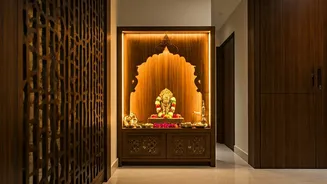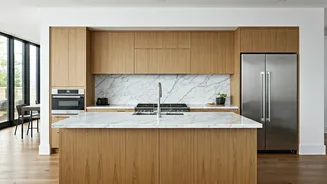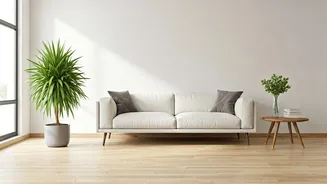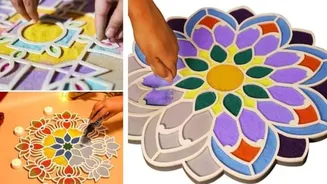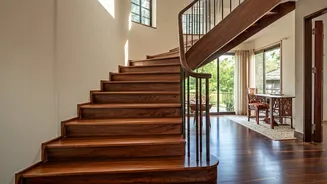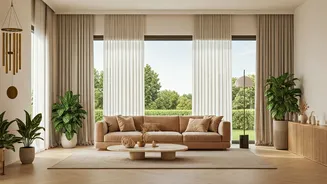Embracing Compact Design
Designing a pooja room within an apartment requires careful consideration of space. Since apartments often have limited square footage, the challenge lies
in creating a functional and aesthetically pleasing mandir without overwhelming the area. Several design approaches work exceptionally well. One idea is to utilize a corner pooja room design, which efficiently utilizes otherwise unused space. Additionally, a pooja room can be seamlessly integrated within a cabinet, providing storage and concealing the sacred space when not in use. The use of sliding panels can offer flexibility, allowing the pooja room to be opened or closed as needed. Furthermore, consider a niche pooja room design, recessing the mandir into the wall to save space and create a focal point. These designs prove that even the smallest spaces can be transformed into beautiful and serene locations for daily worship and meditation.
Essential Vastu Guidelines
Vastu Shastra, the ancient Indian architectural science, provides guidelines for creating harmonious living spaces. When designing a pooja room, several Vastu principles should be considered. Firstly, the ideal location for the pooja room is in the northeast direction of the house, considered auspicious for spiritual practices. If this isn't feasible, the east or north directions are also acceptable. Ensure the idols or deities face east or west. The room's flooring can be made of marble, granite, or wood, chosen for their purity and positive energy. Avoid placing the pooja room near a bathroom or under the staircase, as these areas can disrupt the room's energy. Proper ventilation and natural light are essential. Finally, the placement of the entrance should also align with Vastu principles to maintain the room's positive energy flow. Adhering to these Vastu tips helps create a sacred space that promotes peace and spiritual growth.
Lighting and Ambiance
Lighting plays a crucial role in shaping the atmosphere of a pooja room. The type of lighting used can significantly impact the spiritual experience. Opt for warm and soft lighting to create a calm and inviting environment. Consider using lamps, diyas, and background lights to enhance the aesthetic appeal. Avoid harsh or overly bright lights. Using small lights or background lights can be added to the interior for creating a subtle glow. Additionally, you can integrate LED lights into the design to illuminate idols and create a focused ambiance. The placement and style of lighting should complement the overall design theme. Some examples include installing LED lights in the background of the idols, using decorative lamps, or incorporating spotlights to highlight the deities. These lighting strategies will transform your pooja room into a serene sanctuary.
Material and Décor Choices
The materials and décor you choose can influence the overall look and feel of your pooja room. When it comes to flooring, marble and wood are popular choices due to their association with purity and auspiciousness. Wooden doors with frames can provide an elegant and traditional entry to the pooja room. The background texture can be designed using handmade artistic materials for aesthetic appeal. For wall decor, you can consider a variety of options. You can use paintings, religious symbols, or decorative wall panels. The use of flowers, particularly marigolds, can enhance the room's beauty and positive energy. The addition of idols is also essential. Use small idols and consider a pedestal temple design for a more organized display. Finally, to add a touch of divinity to your pooja room, consider incorporating themed elements, such as a traditional Indian design or a contemporary theme that suits your style and preferences.
Partitioning and Privacy
In apartments, especially those with open floor plans, partitioning the pooja room effectively is crucial. Partitioning ensures privacy and helps define the sacred space. Consider a variety of modern partition ideas that blend well with the existing interior design. Using sliding panels offers a flexible solution, allowing the pooja room to be closed off when needed. The partition can be made of various materials, including wood, glass, or decorative screens, depending on the overall aesthetic. These options offer both visual appeal and a sense of separation. Partitioning provides a distinct division for the pooja room, while maintaining a sense of openness in the living space. The right partition design helps create a harmonious balance between the sacred space and the rest of the home.
Things To Avoid
Creating a serene and spiritually conducive environment involves several considerations. Certain design choices should be avoided to preserve the sanctity of the pooja room. Avoid locating the pooja room directly adjacent to a bathroom or toilet, as it can disrupt the room's positive energy. Keep clutter to a minimum, as a tidy space fosters a clearer mind for meditation and prayer. Avoid using dark or overpowering colors, and opt instead for light, calming hues. Moreover, avoid placing shoes or footwear near the pooja room, as it is considered disrespectful. Finally, do not store unrelated items within the pooja room; this space should be dedicated solely to worship and spiritual practices. By avoiding these common mistakes, you can create a truly sacred and peaceful space.
